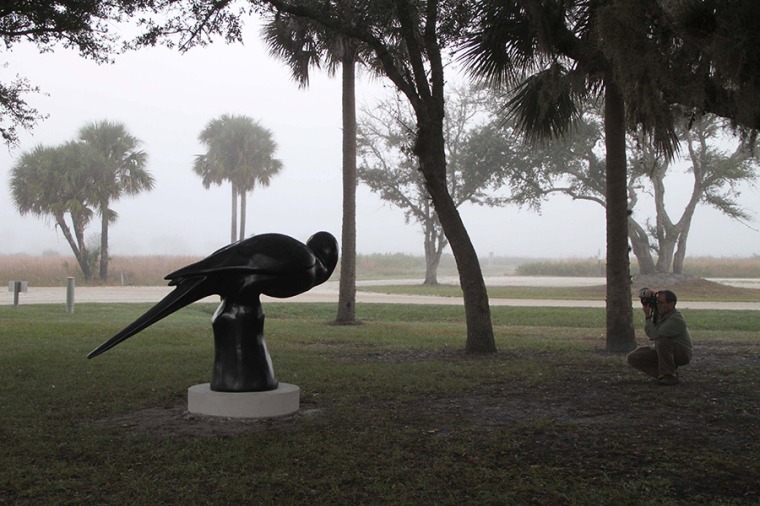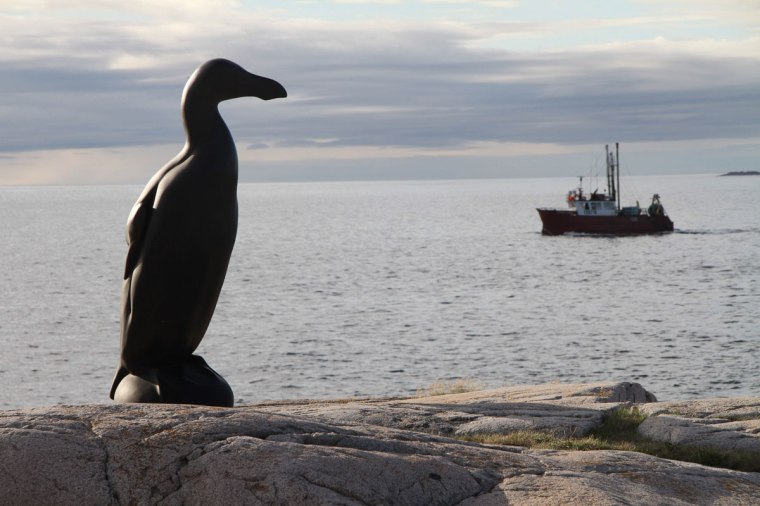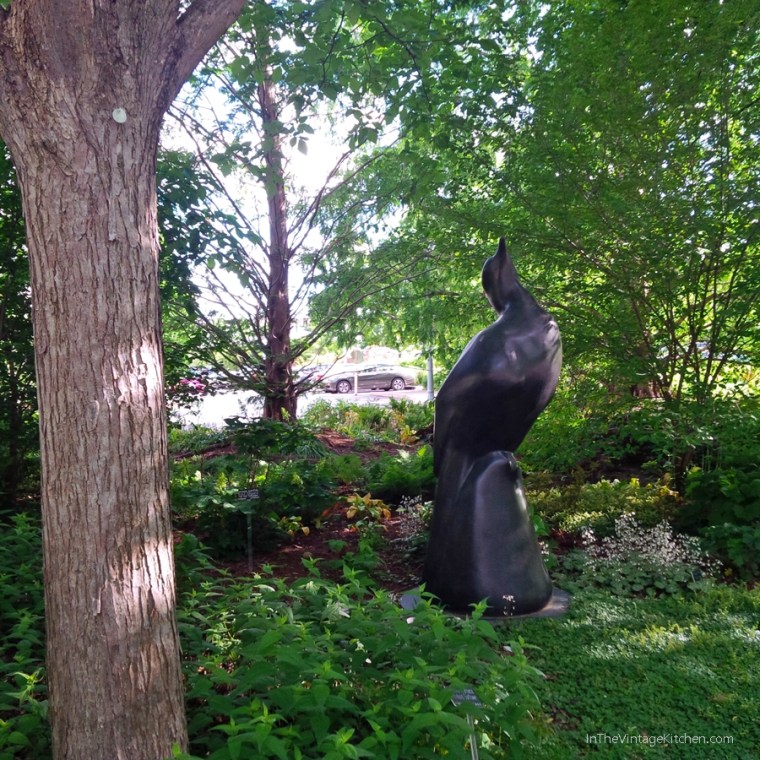The other night, Ms. Jeannie watched a documentary and fell in love with big birds. Five in particular. This is one of them…
The documentary was called The Lost Bird Project and was about an artist who set out to memorialize five birds that are now extinct from our environment.
Inspired, after reading the book, Hope Is The Thing With Feathers (great title!) by Christopher Cokinos, sculptor Todd McGrain built man-size sculptures of five particular birds that are no longer living in the natural world. He wanted the birds to be not only memorials for something now lost, but also educational pieces that would make people pause and reflect about their own individual roles in the hands of nature.
The five birds he chose were:










The documentary presents a wonderful arc of a story from creation of the sculptures through dealing with the bureaucratic red tape of state “gifting” to seeing the sculptures placed in the areas intended by the artist (where the real birds were actually last seen).
Compelling, doesn’t begin to describe the subject matter and at the heart of the story is one man’s quest for genuine expression. It is humble. It is grand. It is remarkable. And it makes you think about nature around us… the common sights and sounds we live with everyday… and all that we might just be taking for granted.
Here’s a trailer for the documentary…
If you’d like to find out more about the project and the artist , visit the film website here. If you happen to live near or have been to see any of the bird statues, please comment below with your thoughts – Ms. Jeannie would love to hear.
****** UPDATE – MAY 8, 2017 ****
The Passenger Pigeon – a Lost Bird Project sculpture was spotted in the gardens of the Smithsonian Museum of Natural History in Washington D.C.!




Breathtaking and impressive sculptures. How wonderful that the lost and endangered are honored in this way. Also a great educational tool for our children.
Thanks for sharing this.
LikeLike
Indeed Pat! The artists’s brother-in-law is working on promoting the project both nationally and internationally – so hopefully the sculptures, and our currently endangered birds will get some great attention.
LikeLike
Ms. Jeannie….what a wonderful project! Beautiful recap that you’ve done here…with great photos! Thanks so much for sharing this…wish I lived near any of these sculptures! Cheers! Patti
LikeLike
Oh thank you Patti! Ms. Jeannie has a feeling that these birds will provide a lot of inspiration for others – just like the book inspired the artist. You just never quite know what could happen next!
LikeLike
Birds are so amazing… Beautiful recap! 🙂
I also wanted you to know that I was nominated for a Liebster Award a few weeks ago and I would like to, in turn, nominate you for it.
You will find all the details here: http://www.midnightcaramel.com/2013/07/liebster-award.html
I hope you’ll have fun participating!
Have a lovely day!
LikeLike
Oh thank you my dear for your lovely comments and the nomination! Off to check it out!
LikeLike
Wow! I have lived on Martha’s Vineyard for 13 years and never knew about the sculpture and it’s story. Of course I asked other people I know and it seems that everyone else did.
That’s so exciting! I am going to go see it this week. Thank you, Ms. Jeannie. I love your blog.
LikeLike
Oh how exciting Victoria! Please send us a picture of it when you go and we’ll post here on the blog. You can email it to msjeannieology@yahoo.com
So glad you have discovered something new!
LikeLike
Ms Jeannie,
I sent you some pictures of Booming Ben, the heath hen.
Victoria
LikeLike
I live very close to where the Carolina Parakeet sculpture was placed, the Kissimmee Prairie Preserve State Park. The kissimmee is one of the reasons for my choosing to stay in this part of Florida, and I promise you, that everyone who loves the park is humbled that it was chosen for the honor. I only wish that I coud visit each scupture.
LikeLike
Oh that is fabulous my dear! Thank you for commenting. If you find yourself in the park again sometime soon – please send us a picture of the sculpture. You can email it to msjeannieology@yahoo.com.
LikeLike